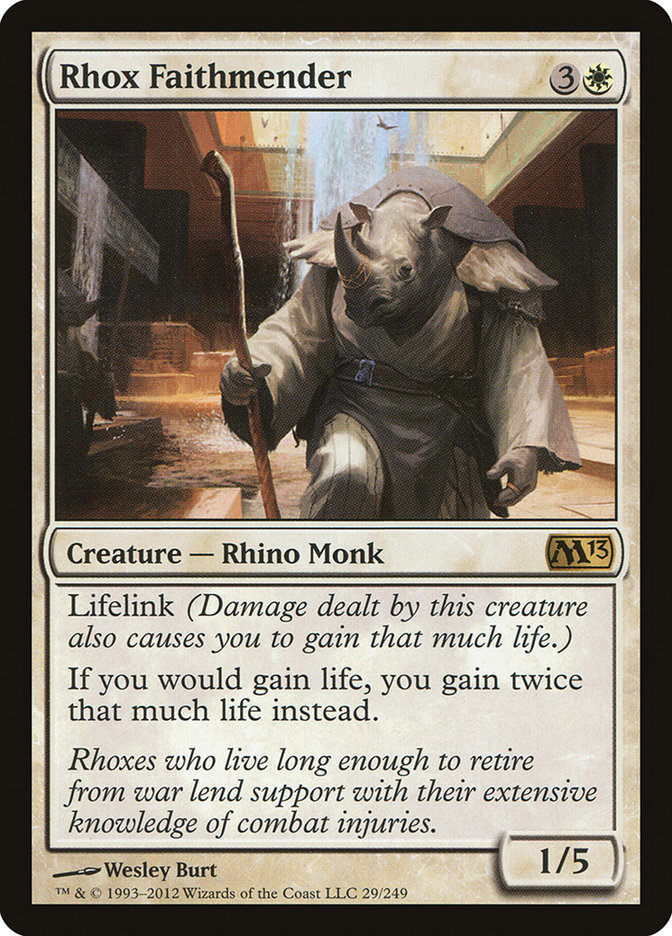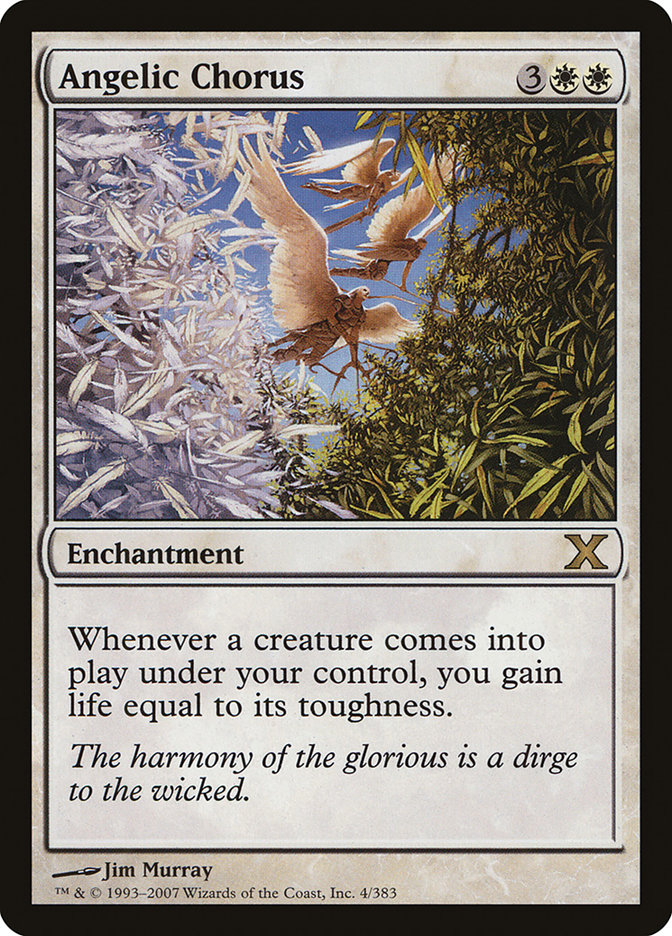Religion is a touchy subject for a lot of humans. People are quick to assume a homogeneity amongst religious folk, whether or not the aforementioned are themselves religious. I find it just as frustrating when a Christian universalizes their own sect’s dogma as it is when an Atheist dismisses millions of Muslims based on the actions of a radical few. Even within these umbrellas there are vibrant diversities of belief.
This past weekend I spent some time at the naming ceremony for my tiny Jewish niece. Now, I was raised a Quaker, a religion which still holds my soul and my attention, if not my weekly attendance at a Meeting House. Quakers, or at least the Philadelphian sect I come from, are basically a Hippie religion that helped found America. Pennsylvania wouldn’t exist without Quakers, and like Rhode Island, Pennsylvania was founded to be a home to religious pluralism. You see, Quakers are universalist, and more than happy to allow for the many paths that people take to talk to some higher power… but we eschew ritual. The focus of the Religious Society of Friends (Quakers) is on one’s personal relationship with god. In most cases, they don’t utilize priests or clerics (the logic being that if god is omnipotent, omniscient, and omnipresent, an intermediary or required payment isn’t really necessary).
The Church of Orzhova is basically the inverse of everything I believe, and I find it fascinating because of that. When I was young, Magic got banned from my Quaker school when my heavy-handed computer teacher threw a fit over the demonic imagery on Unholy Strength and Lord of the Pit. I take it she wasn’t the only one, for the next printing of both those cards had the questionable symbols ripped from the art. After that, Magic got a little gunshy about critiquing and depicting religion for a while… until we reached the City of Guilds.
If there’s a more trenchant fantasy critique of the structure of the elder churches, it has to be less popular than Magic. In eras of great inequality, religions like the Catholic Church owned land, harvested money from their believers, and generally put themselves on sale. The practice of buying indulgences was so widespread at one point that it was name-checked in Martin Luther’s 95 Theses, the document that basically started the Protestant schism. Even before that, when you go back to early Christianity, you see the corruption inherent in an event like the Council of Nicea, where the modern Christian bible was thrown together in a process reminiscent of the 1968 Democratic Convention. Magic took all this semi-forgotten history, tied it in a bow, and then gave the white-black dyad a color identity: lawful evil, the corrupted church.
I was reminded of all this when I saw today’s entry, focusing on Ghost Dad and the taxation elements of the Orzhov. Let’s see what the Church of Deals has to offer us today!
|
I’ve gone through several iterations of a White/Black deck, first out of Triad of Fates that slowly evolved into a more “Group Hug” deck that took
Instead of trying to keep tinkering with it, I finally changed the commander to something more solid with the Church of Deals: Obzedat, Ghost Council. The
Money, in Magic, is mostly represented in 3 things: Life, mana, and cards. That’s the focus here, and by manipulating Life, the Church of Deals can quite
My problem is I am not sure it’s as cohesive as it should be. It’s a very political deck so the card choices are fairly odd (Who really runs
There are only two things I will not do: Run Sanguine Bond in the same deck with Exquisite Blood (I’ve been on the receiving end of that far too often and This is the deck: Syndicate Panda (AKA Free Lunch) Commander: Obzedat, Ghost Council Creature (18) Sorcery (7) Planeswalker (2) Enchantment (17) Artifact (14) Land (38) 13 Plains 11 Swamp Instant (3) -Russel |
I’ve been in the same situation as Russel, and I think part of that is inherent to a deck that’s undergone a fairly major pivot. Magic has a huge card pool
and perhaps a larger pool of potential themes. Take a deck like this one, which has several major themes in play, and you can see how it might be hard to
start cutting.
Especially when the remnants of the old themes work decently with the new ones. The four major themes of this deck are enchantments, taxation, lifegain,
and “choke on it” draw. The choking theme plays well with the taxation theme since they both whittle away at similar rates, and the enchantment and
lifegain themes partner well together since several great lifegain cards are themselves enchantments. So on one level, these factors fit.
Of course, nothing exists on only one level. While these themes weave together mechanically, they have vastly different effects on your aggro profile.
Unless you’re at more than 100 life, lifegain doesn’t tend to draw a ton of aggro. Sure, you might get attacked a little more since you have life to spare,
but no one is going to dedicate themselves to ruining your board position on the back of lifegain alone. Taxation is annoying to keep track of, but as long
as each individual person is only taking a point or two here and there, it tends to be a low aggro theme. Enchantments worry people because they are the
hardest permanents to remove, but without something like Serra’s Sanctum or one of the Enchantresses, people tend to respond calmly as you’re developing
your board.
Quick aside:you have Angelic Chorus in play and you play a kicked Rite of Replication targeting an opponent’s Rhox Faithmender, how much life do you gain?
But people hate to get choked by something like Underworld Dreams or Fate Unraveler. Giving other people cards will keep them from attacking you so long as
those cards are free, but when you add a cost and make them pay it… that turns it around. Every card they draw is a reminder that you’re hurting them, and
they’ve got a limited number of cards they could possibly see to dig themselves out of that mess. That leads to the universal solvent situation: people
coming after you because the only way to get rid of your permanent is your death.
Yikes!
So I cut the “choke on it” draw theme, leaning into the extortion and enchantment themes a little bit more. I didn’t go full extort, although I think
there’s definitely room to play Thrull Parasite, Tithe Drinker, Syndic of Tithes, and Basilica Screecher in a deck like this. Instead… well, why don’t I
just show you?
Lands and Ramp
Out
(2):
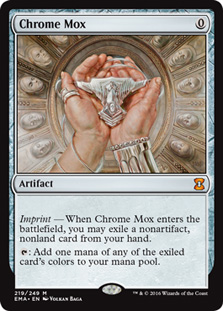
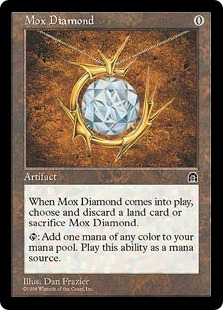

In
(1):
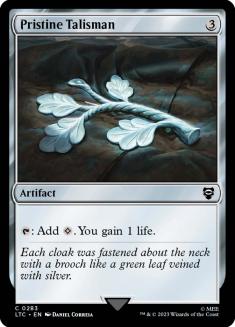

Your lands seemed fine. You’ve got enough basics to maximize the value of Land Tax and Oath of Lieges, and your non-basics all seemed on point. Perhaps you
might want to add in Rogue’s Passage, but the aggro that would draw might not be worth the slot.
What I did find somewhat less necessary were the inclusions of Chrome Mox and Mox Diamond. They’re both negative on card advantage, and the boost in speed
they grant is only really needed if you have a guaranteed two-drop or way to take advantage of their costs. I would play Mox Diamond in a Life From The
Loam deck or Chrome Mox in a deck with Torrent Elemental or Misthollow Griffin, but without specific synergies or a two-drop commander, I think it’s a
little loose.
Instead, let’s play Pristine Talisman! That card is often overlooked because one life seems so marginal, and it’s a three-drop rock that doesn’t tap for
rainbow mana. But it’s on theme, it does something, and that life adds up without being something your opponents are going to bother to answer. I would
never play a card that just read “gain one life a turn,” but slap that ability on something useful and then we’re cooking with gas!
Draw and Recursion
Out
(7):
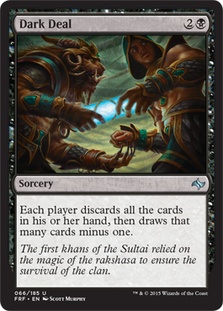
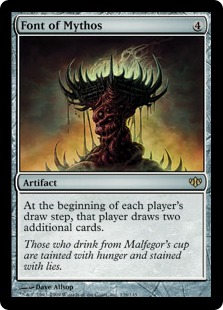
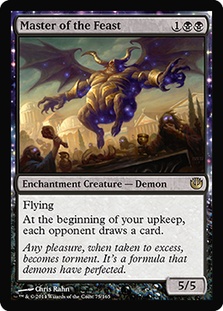
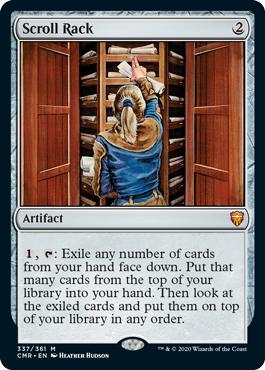

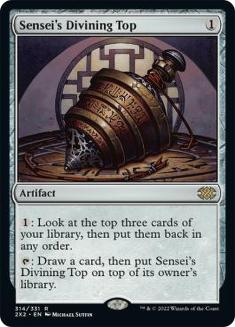
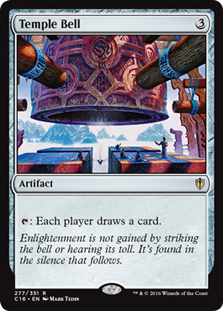
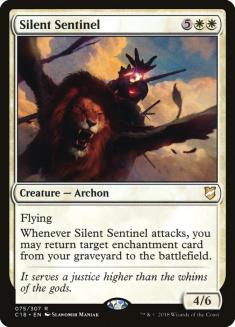

In
(5):
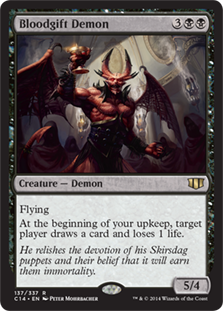
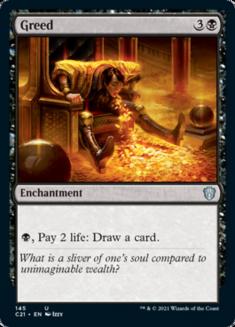
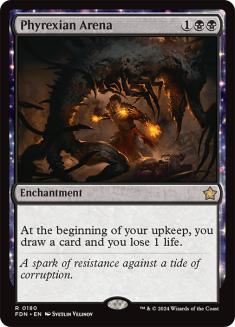
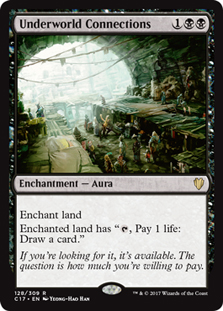
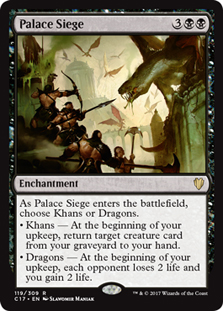

The titans really raised the bar for attack triggers. Now, whenever I see something that only provides card advantage when it attacks, I wish it were more
like the titans. Considering the mythology we draw our titans from, that’s not a particularly pleasant wish. But it certainly means I’m much more skeptical
now of a card like Silent Sentinel, which gives your opponents a full turn cycle to bomb your graveyard or scythe the Silent Sentinel before you get a
chance to go net positive on your card advantage.
Instead, let’s run Palace Siege. It’s on theme for enchantments and for taxation, even if it’s not amazing in either theme. It doesn’t let you pull back
enchantments like Silent Sentinel, and it’s got a sizable wait for the ability as well, but its flexibility goes a long way towards making up for its
relatively weak power level.
And, I mean, it’s weak compared to Oversold Cemetery. There’s still a lot you can do with a free Raise Dead every upkeep!
When I first saw Dark Deal, I thought it was cool, some black version of Windfall or Wheel of Fortune. My fervor has since dissipated due to the political
balance the card strikes. Discarding your hand is usually infuriating. It’s one of the reasons I dislike playing discard strategies in tabletop Commander;
without an ameliorative aspect, they draw aggro without advancing your board position. Sure, you narrow their decision tree, but again, that often inspires
backlash. Wheel of Fortune and Windfall make up for that by making your opponents whole again. You get a better set of cards because you’re the one pulling
the trigger; they get a worse set of cards (usually), but it’s enough of a wash that they’re not going to hate you for making them drop their hand. Dark
Deal doesn’t make them whole again. If your opponent has two good cards in hand, and you make them discard them both and draw a land, that opponent is
going to hate you. If you’re pinging them for each card on top of it, that hate will blossom into murderous rage.
Master of the Feast, Font of Mythos, and Temple Bell all got cut as part of severing the “choke on it” theme.
Finally, there’s Scroll Rack and Sensei’s Divining Top. Personally, I find Top annoying in Commander. It takes up a tremendous amount of time while not
really offering great selection. In a non-green deck I prefer the Crystal Ball to the Top, as it’s self-limiting in terms of how much time you can spend on
it, it sends bad stuff away so you don’t get Top-locked, and it draws significantly less attention than the difficult-to-remove Top. In green, I prefer
Cream of the Crop. You see far more cards, and I like that.
Scroll Rack has that cute combo with Land Tax, but Land Tax is plenty powerful without it. I like it in cards where the top of your library matters, like
Maelstrom Wanderer or Narset, Enlightened Master, but otherwise I think Scroll Rack is another annoying timesuck.
Instead, let’s bring in some draw options that a) only work for you, and b) reinforce the themes of the deck. For Phyrexian Arena, Greed, and Underworld
Connections, the reinforced theme is obvious: They’re enchantments! Playing them will trigger your constellation. For Bloodgift Demon it’s a little less
obvious, but I like it because of how it can be used politically. That draw ability can be pointed in any which way, and there are times when that’s going
to make a difference.
Mitigating Aggro
Out
(3):
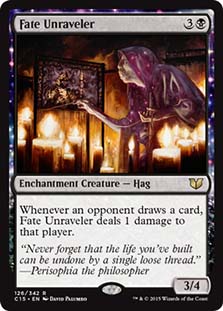
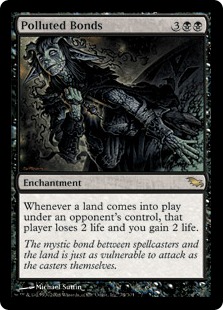
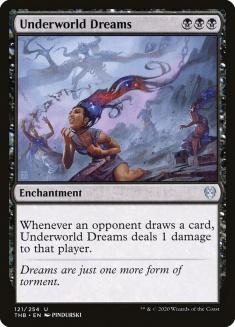

In
(1):
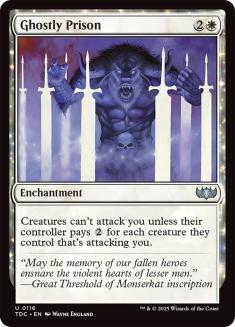

As I mentioned it before, I’m not a huge fan of cinch-subthemes. If you build your whole deck around it, you’ll have the tools to manage the aggression
your strategy will provoke; otherwise, you might find you’re drawing aggro disproportionate to your primary strategy. Underworld Dreams is annoying. Fate
Unraveler is annoying. Polluted Bonds is even worse. Each one penalizes you for doing the basic elements of playing Magic, things that people can’t or
won’t stop doing.
Compare Polluted Bonds with Shattered Angel. Shattered Angel gives you a reward when your opponents do something; Polluted Bonds steals something from your
opponents when they do something. Guess which one draws more hate!
Instead, let’s bring in Ghostly Prison. It’s a cheap enchantment to buff up your enchantment subtheme, and it narrows your opponents’ options in a way that
both fits the theme of the deck and doesn’t draw a tremendous amount of hate. Imagine if Ghostly Prison worked in the inverse and made your opponent pay
mana whenever they attacked anyone. That would be annoying, and it would be baldly apparent how you have limited their options. However, when you’re still
letting that opponent attack other players, they’re much more likely to overlook the way you’re messing with their decision trees.
At least, that’s what I like about Propaganda effects.
Gaining Life
Out
(2):
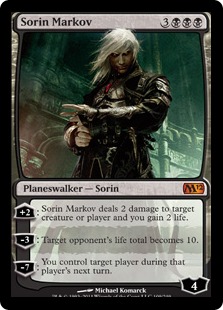
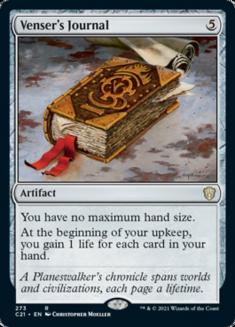

In
(4):
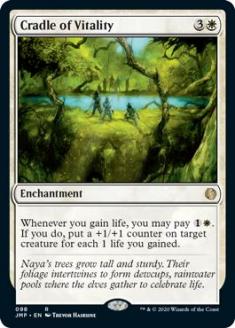
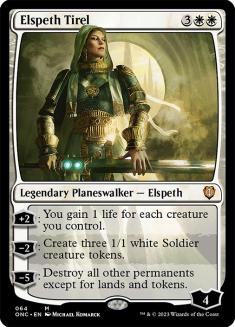
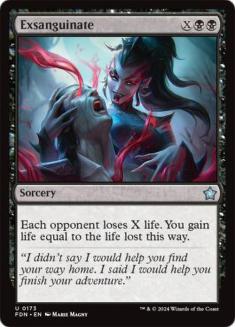
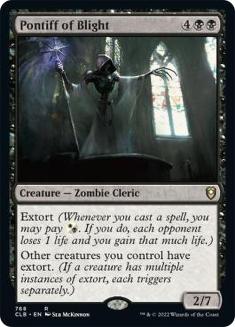

Sorin Markov and Magister Sphinx should be banned from Commander. Venser’s Journal is a borderline card, both because of its cost and because of its
effect. Five mana is a lot to pay for a card that doesn’t affect the battlefield. The primary reason to run it is to have no maximum hand size, but I find
that hand size limitation is a major element in keeping games running quickly. When you have to search through 25 cards to find the play you want to
trigger at any given moment, that is necessarily going to extend the dead time for your opponents.
I like Cradle of Vitality in an Obzedat, Ghost Council deck. The difference between a five-power commander and a seven-power commander is the difference
between a three-turn clock and a five-turn clock. With Cradle of Vitality, whenever Obzedat comes back into play you can pay 1W to give it +2/+2. Or, if
commander damage isn’t your jam, you can buff up other creatures after every upkeep, keeping your monsters relevant even as your opponents ramp up.
Elspeth Tirel is in there because she does a bunch of different things. She gains life, makes tokens, and works as a Wrath of God of last resort if you can
ultimate her (which is not hard). With Spear of Heliod in the deck, those tokens could come in handy.
Exsanguinate is on theme and a good complement to Debt to the Deathless. I used to Group Game Draft during Scars of Mirrodin block, and
Exsanguinate was a slam first pick since it made rumbling very easy.
Have you ever Group Game Drafted? You should, it’s a lot of fun! All it takes is four to six people and four packs each… if you want to learn more, check out this link.
Finally, there’s Pontiff of Blight. I like that card, because not only does it allow for incredibly efficient uses of your mana, but it’s also a 2/7. Those
stats are great when you don’t plan to attack to win since they hold the ground against all sorts of attackers.
Removing Threats
Out
(2):
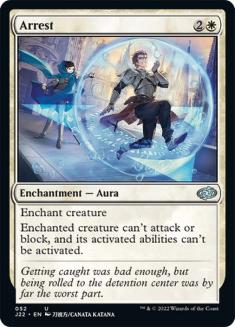
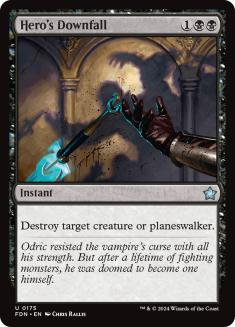

In
(5):
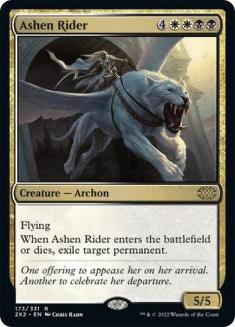
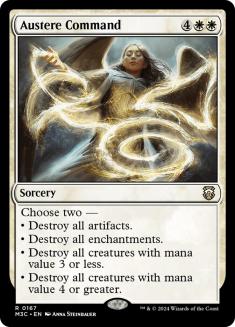
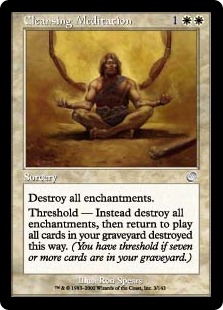
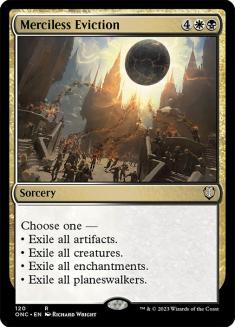

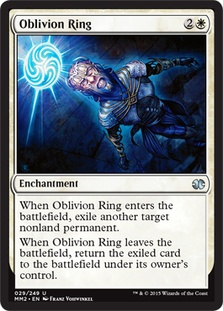

Now we come to the end, the removal section. I considered going full flavor and bringing in Wrath of God and Damnation, but one of those is way more
expensive than the other (thanks Modern Masters 2 for the exclusion), while neither of them work great with a Commander relatively immune to sorcery-speed
mass removal.
But mass removal is still the name of the game in Commander, so I brought in three that should fit: Austere Command, Merciless Eviction, and Cleansing
Meditation. Each has a loophole that gives you the power to dodge the destruction if that’s what you need at that specific point in time.
Instead of the spot removal offered by Arrest, which is vulnerable to Day of Judgment and kin if you’re trying to keep enchantments on the board, let’s go
with Oblivion Ring. It’s a more utilitarian solution. Similarly, while Hero’s Downfall is a cheap instant, a deck that can gain life and play with the
graveyard (I see you, Whip of Erebos) is going to be better served by Ashen Rider. That card is bonkers, and you’re going to get to the lategame enough
that casting it shouldn’t be a problem.
The List
Creatures (19)
- 1 Agent of Masks
- 1 Souls of the Faultless
- 1 Sun Titan
- 1 Bloodgift Demon
- 1 Rhox Faithmender
- 1 Treasury Thrull
- 1 Obzedat, Ghost Council
- 1 Vizkopa Guildmage
- 1 Pontiff of Blight
- 1 Heliod, God of the Sun
- 1 Erebos, God of the Dead
- 1 Ashen Rider
- 1 Scholar of Athreos
- 1 Doomwake Giant
- 1 Athreos, God of Passage
- 1 Agent of Erebos
- 1 Grim Guardian
- 1 Underworld Coinsmith
- 1 Sunscorch Regent
Planeswalkers (2)
Lands (38)
Spells (41)
- 1 Ghostly Prison
- 1 Replenish
- 1 Phyrexian Processor
- 1 Land Tax
- 1 Sol Ring
- 1 Demonic Tutor
- 1 Greed
- 1 Temporary Truce
- 1 Flickering Ward
- 1 Subversion
- 1 Well of Lost Dreams
- 1 Phyrexian Arena
- 1 Oblation
- 1 Truce
- 1 Oath of Lieges
- 1 Angelic Chorus
- 1 Seal of Doom
- 1 Cleansing Meditation
- 1 Hissing Miasma
- 1 Orzhov Signet
- 1 Pillory of the Sleepless
- 1 Austere Command
- 1 Oblivion Ring
- 1 Prison Term
- 1 Cradle of Vitality
- 1 Tainted Sigil
- 1 Open the Vaults
- 1 Exsanguinate
- 1 Pristine Talisman
- 1 Exquisite Blood
- 1 Underworld Connections
- 1 Sphere of Safety
- 1 Blind Obedience
- 1 Merciless Eviction
- 1 One Thousand Lashes
- 1 Debt to the Deathless
- 1 Spear of Heliod
- 1 Whip of Erebos
- 1 Darksteel Mutation
- 1 Palace Siege
- 1 Damnable Pact

As you can see, it retains the enchantment and taxation themes, as well as keeping in enough tools like Truce to help maintain political advantage. I
leaned in a bit to the removal and draw sections, but all in all, it should play similarly to the previous version, just a bit sharper.
Not that it wasn’t sharp to start! I made fewer adjustments to this list than usual, because I liked where it was even in the beginning. Hopefully, moving
away from the “choke on it” subtheme (can someone please come up with a pithy name for this theme because that’s the best I can do and it’s killing me)
will prove a positive in the long run.
The Cost
As you learn from the Church of Deals, everything has its price. In this case, though, that price was not hugely expensive. Most of the price comes from
four cards, each of which should have been included in Modern Masters 2015: Austere Command, Elspeth Tirel, Ghostly Prison, and Phyrexian Arena.
The rest is relatively inexpensive… see for yourself!
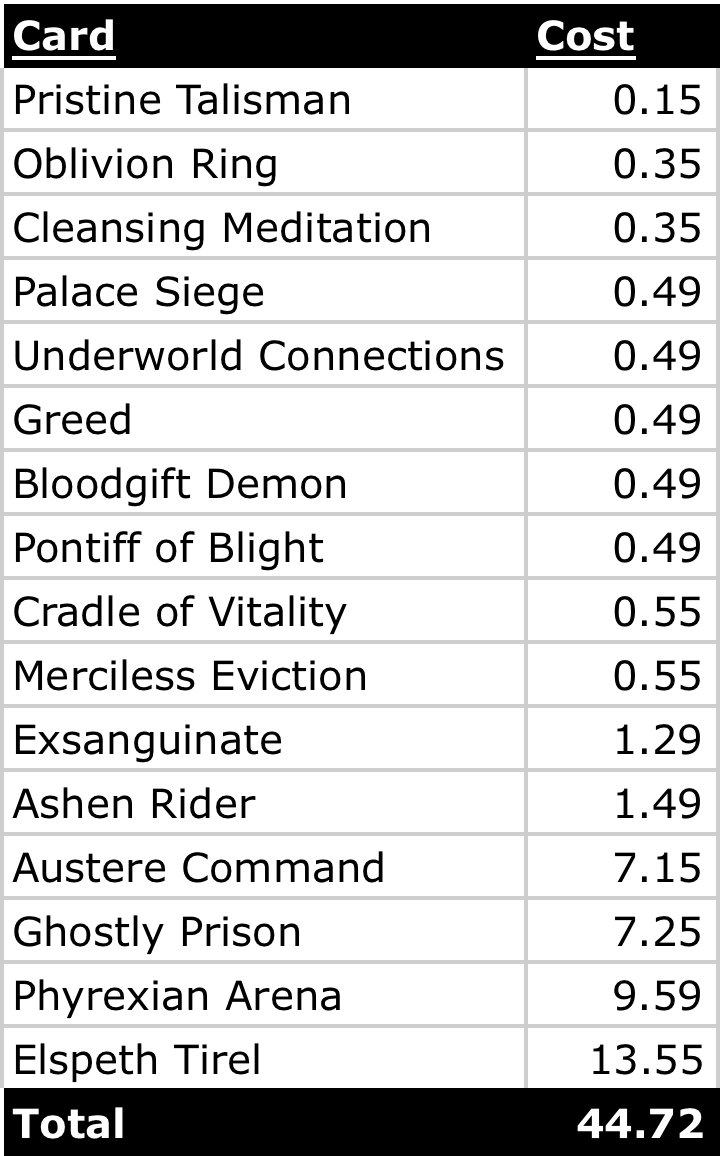
I hope you like these changes, and I hope you get good use out of that $20 StarCityGames.com store credit you receive from having your deck chosen for use
in Dear Azami. Other interested parties should be sure to submit via our email address, which is DearAzami [at] gmail [dot] com.
Submit! And while you’re at it, check out all the cool cards they DID reprint in Modern Masters 2015. There’s
some neat stuff in there, and some even cooler foils!
Want to submit a deck for consideration to Dear Azami? We’re always accepting deck submissions to consider for use in a future article. Only one deck
submission will be chosen per article, but being selected for the next edition of Dear Azami includes not just deck advice but also a $20 coupon to
StarCityGames.com!
Email us a deck submission using this link here!
Like what you’ve seen? Feel free to explore more of Dear Azami here, in the Article Archives!
And feel free to check Jess’s own Command of Etiquette
column on Hipsters of the Coast, for more Commander and casual content. Now on Thursdays!



